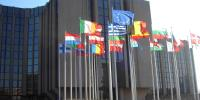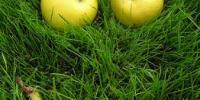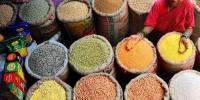The government of Iran signed a momentous 6-year agreement with The International Maize and Wheat Improvement Center(CIMMYT) for joint work to raise the productivity of the country’s wheat farms on some 2.5 million hectares—roughly 13 percent of the nation’s cultivated area.
Researchers of Iran and CIMMYT will develop and share improved varieties, draw on wild grasses of Iran as sources of resilience in breeding, improve policies and seed production/distribution systems and spread the use conservation agriculture practices.
Signed at Iran’s Ministry of Jahad-e-Agriculture in Tehran and emerging from Iran’s decades-long partnerships with CIMMYT and a meeting with Iran’s Agricultural Research Education and Extension Organization (AREEO) in 2014, the agreement supports work expected by 2022 to deliver wheat lines and agronomic technologies that raise grain yield 25 percent on rainfed farms and 35 percent in irrigated areas.
“I’m extremely pleased about this agreement with a long-time, valued partner,” said Martin Kropff, Director General of CIMMYT. “It bespeaks Iran’s serious focus on providing affordable food and generating income for farmers. It also comes at a time when agri-food systems everywhere face daunting challenges, like more frequent droughts and less available irrigation water.”
A staple food crop and the basis for food security in Iran, wheat provides around 40% of the calories and protein in the Iranian diet, is grown in total on as much as 6.5 million hectares and constitutes the dominant crop in most farming systems. The crop is grown with rainwater or irrigation.
Wheat grain yield and production have stagnated or declined in both rainfed and irrigated areas, according to Mohammad Reza Jalal Kamali, principal wheat scientist and CIMMYT liaison officer for Iran. “Reasons include extreme droughts over the last decade, limited water for irrigation, erratic rainfall, soil degradation and warmer temperatures,” says Jalal Kamali, adding that although new high-yielding varieties have been introduced, however, agronomy in general and crop management in particular is poor.
Kamali says that Iran considers the new collaboration a high-return investment that will also involve the CGIAR Research Program on Wheat (WHEAT), led by CIMMYT and with the International Center for Agricultural Research in the Dry Areas (ICARDA) as principal research partner.
A global study by WHEAT on the impacts of international collaboration in wheat research during 1994-2014 found that CGIAR-derived varieties —all traceable to CIMMYT and ICARDA breeding programs — covered more than 100 million hectares in 2014 and that the yearly value of the added grain produced ranged from $2.2 billion to $3.1 billion each year.
The signing ceremony for the project was attended by H.E. Mahmoud Hojatti, Minister of Jahad-e-Agriculture of I.R. Iran, and involved Kropff; Eskandar Zand, Deputy Minister and Head of AREEO; Abbas Keshavarz, Deputy for Crop Production; Mahmoud Solh, Director General of ICARDA; and Serge R. Nakouzi, FAO representative in Iran.
“High ranking officials in Iran are very concerned about national food security,” Hojatti says. “We believe that collaboration with CIMMYT and ICARDA, with use of science and new technologies, will lead to improvements in food crop productivity and production.”
To read the original story, visit the CIMMYT website.
This news item is part of a Partner Spotlight on CIMMYT (3-7 October) on the occasion of CIMMYT's 50th Anniversary.
Each week, the GFAR Secretariat is turning the spotlight on the work and collective actions of Partners in GFAR who share in our mission to strengthen and transform agri-food research and innovation systems globally. For more information on the Partners in GFAR, and to become a Partner, click here!
Photo: Wheat farm in Moghan, Caspian Region, northern Iran. Photo credit: J.Kamali/CIMMYT





















